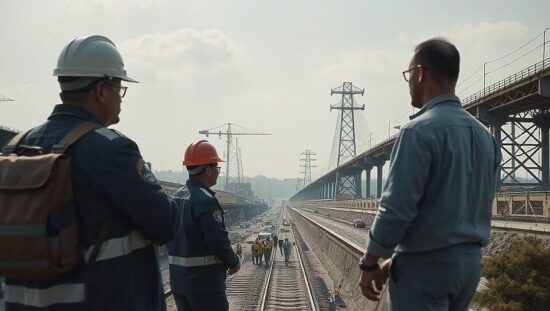A Growing Sense of Urgency Surrounds Fehmarn Belt Fixed Link Project
Despite recent setbacks and mounting concerns over timelines, Germany and Denmark have reaffirmed their commitment to the ambitious Fehmarn Belt fixed link project, a vital infrastructure initiative connecting the two nations. A joint statement released this week emphasized the continued validity of the existing bilateral treaty governing the endeavour, following a virtual meeting between German Federal Minister for Digital and Transport, Patrick Schnieder (CDU) and his Danish counterpart, Thomas Danielsen.
The project, encompassing a 17.6-kilometer tunnel and extensive upgrades to rail and road hinterland connections in both countries, is increasingly viewed as a strategic priority for European transport links. However, implementation has been plagued by escalating delays. Just this year, DB Infrago AG announced the hinterland rail connections, essential for the tunnel’s operational efficiency, will now extend beyond 2029, significantly impacting the project’s intended benefits. Equally concerning is the acknowledgement from Sund & Belt Holding A/S, responsible for a specialized vessel crucial to the tunnel element installation, that delivery has been severely delayed, directly jeopardizing the 2029 opening target.
The joint statement downplayed the implications of these challenges, framing them as “complex questions with diverse causes” requiring a coordinated response. While both ministers expressed a shared determination to “undertake everything in their power” to expedite completion, the reassurances ring somewhat hollow given the series of disclosures. The agreement to assess the on-site situation in early 2026 suggests an acknowledgement that the project’s current trajectory demands a serious reappraisal.
Critics are questioning whether the rapid reaffirmation of the treaty without a detailed public examination of the causes behind the delays is a tactic to avoid politically uncomfortable scrutiny. The project’s ballooning timeline and potential cost overruns – currently estimated at over €10 billion – raise fundamental questions regarding its feasibility and long-term strategic value.
Furthermore, the ongoing dependency on a specialized vessel facing substantial delays exposes a significant vulnerability in the project’s execution, highlighting a potential need for contingency planning and a more robust risk management framework. The coming months will be critical in determining whether the ambitious project can be salvaged from the mounting challenges and whether the shared commitment truly translates into concrete action to overcome the growing sense of unease surrounding its future.





